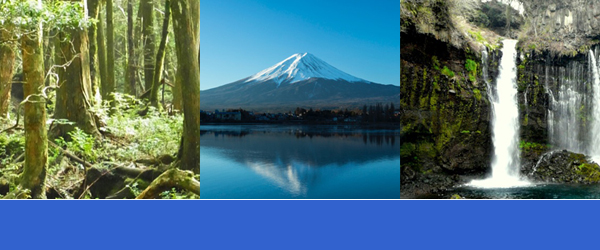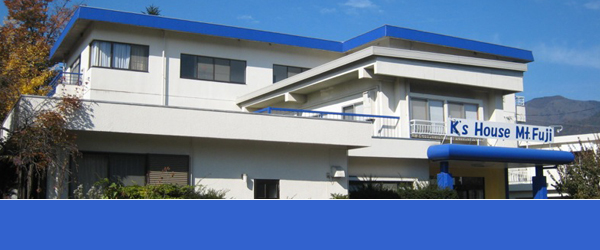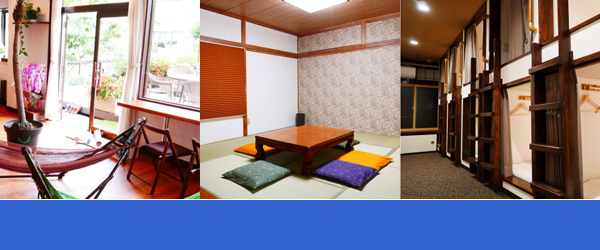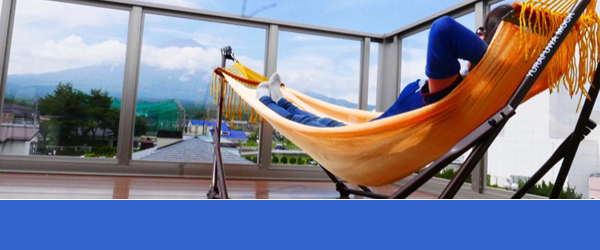Things to know – Enjoying Mt. Fuji in Spring, Summer, Autumn and Winter
* The following article discusses events limited to Yamanashi Prefecture.
* Countermeasures taken to prevent the spread of coronavirus (COVID-19) may disrupt or even cancel these events. Please be sure to check the latest information in advance of your trip.
* The following information is correct as of July 2022.
=========================================
The Mt. Fuji area has numerous seasonal events that attract hundreds of people throughout the year. Several of these events have their beginnings in the Edo period, enabling visitors to experience a slice of history while enjoying the scenery. This article provides carefully selected specific seasonal events that we think you will enjoy. The author, a local to the area, hopes that this provides you with useful information for your trip.
Spring Events
The area around Mt. Fuji’s north face is located at an altitude of 800-1000m and as such has a cooler climate than the likes of Tokyo and Osaka. In March, the eagerly-awaited arrival of spring is marked with the blooming of plum blossoms. The cherry blossom blooming season is delayed to just beyond that of Tokyo and Osaka.
Cherry Blossom Festival
Here are two events related to cherry blossoms; “Fuji-Kawaguchiko Sakura Festival” and “Arakurayama Sengen Park Cherry Blossom Festival”. Both of these festivals are valuable opportunities to witness two of Japan’s most iconic symbols, the sakura blossoms and Mt. Fuji, side-by-side.
Fuji-Kawaguchiko Sakura Festival

Enjoy viewing the around 200 Yoshino cherry blossoms trees planted along Lake Kawaguchiko’s northern shore, set against the backdrop of the iconic Mt. Fuji. The main venue surrounds the Kawaguchiko Circular Hall where craft market stalls can be found.
From sunset to 9pm, the cherry blossoms will be illuminated so that you can view them day or night.
Admission – Free
Parking – There is free parking nearby.
Arakurayama Sengen Park Cherry Blossom Festival

Arakurayama Sengen Park is best known as the location of the five-story pagoda, ‘Chureito Pagoda’. The event is widely known not just to Japanese people but also to foreigners, since at this time and place you can view Mt. Fuji, the pagoda and the sakura all at once.
Depending on the time of year, admission to the observation deck may be reserved in advance. On some occasions, admission is on a first-come, first-serve basis and may even be restricted, so it is recommended that you check the most up-to-date information in advance of your trip.
Admission – Free
Parking – There is a paid parking lot nearby.
Official Fujiyoshida Travel Guide – Cherry Blossom Festival 2021
Fuji Shiba-sakura Festival

Held at Fuji Motosuko resort since 2008, this is the largest Shibazakura Festival in the Tokyo Metropolitan area. Here you can take in the highly colourful scenery formed from several different types of floral moss. The best time to see the flowers varies depending on the weather, but you can check the flowering status on the official website.
The moss, known as moss phlox, is covered with many white and pink flowers similar to cherry blossoms, but the plants are technically classified as azaleas, a different species. Cherry blossoms meanwhile are in the same order of plants as roses.
Parking – There is a paid parking lot inside the venue.
Kai-no-Katsuyama Yabusame Festival

【Cancelled in 2022】
This festival is held on April 29th at Fuji Omuro Sengen Shrine and Shikkogo Park on the shores of Lake Kawaguchiko. The “Takeda-Ryu Yabusame” event held here has a legacy of more than 900 years.
After an initial ceremony and Shinto ritual, the exciting main event – horse archery – begins. The archers set off at speed on their horses while taking aim at several targets. You can’t fail to be inspired by the riders’ talent and ability.
Admission – Free
Parking – Available but limited – we recommend using public transportation. From Kawaguchiko Station, take the Saiko Sightseeing Bus (“Green Line”) and get off at the “Fuji Omuro Sengen Shrine” bus stop.
Summer Events
When spring has passed, the rainy season comes to Kawaguchiko. Though you might not feel like going out in the rain, you might be interested in the flowers that bloom to meet it. Grab an umbrella and set out to see the colourful lavender and hydrangeas that appear during this time.
In July, the Mt. Fuji climbing season begins and the foot of Mt. Fuji will be bustling with events until August.
Kawaguchiko Herb Festival

The venue for the festival, Oishi Park, is located on the north shore of Lake Kawaguchiko. Set against the backdrop of Lake Kawaguchiko with Mt. Fuji towering in the background, the sight of lavender in full bloom really makes you feel like summer is approaching. Souvenirs, drinks and sweets are available from the shops and cafes in the nearby Kawaguchiko Natural Living Center, and a special booth will be opened there during the event.
Admission – Free
Parking – Free
Climbing Mt. Fuji

Of the Mt. Fuji mountain trails, the only one on the Yamanashi side is the Yoshida trail, which is open from July 1st to September 10th. On June 30th, the day before the beginning of the mountain climbing season, a night festival and ceremony is held in Fujiyoshida. The festival is held between Kanadorii City Park and Kitaguchi Hongu Fuji Sengen Shrine – the starting point of the Yoshida trail.
Many people of all skill levels climb Mt. Fuji every year, but advance preparation and information gathering are vital for every climber. Please check all relevant information, such as the updates on the official Fuji climbing website, to make sure it’s safe to climb the mountain. We have created a page full of easy-to-understand information for climbing Mt. Fuji, so please take a look:

Fuji Five Lakes Fireworks Festival

photo courtesy of the Fuji Five Lakes Tourism Federation
With August, the rainy season ends, and summer truly begins! Escape the hot, humid air of the cities and come to the foot of Mt. Fuji – an unbelievably refreshing breeze during the day and cooler evenings are waiting for you.
Fireworks festivals are held every day from the 1st to the 5th of August at each of the Five Lakes in sequence. This might be the most lively and exciting part of summer in the area.
August 1st – Hoko Festival (Lake Yamanakako)
August 2nd – Ryugu Festival (Lake Saiko)
August 3rd – Shinko Festival (Lake Motosuko)
August 4th – Ryoko Festival (Lake Shojiko)
August 5th – Kojo Festival (Lake Kawaguchiko)
The last of these festivals is probably the most exciting. It has its origins in the Kawaguchi Asama Shrine Festival called “Misogi Festival”. The tradition of holding this festival began in 1917 – over 100 years ago.
Parking – Free (at designated parking lots)
Yoshida Fire Festival

One of the three ‘Unique Festivals’ of Japan, the Yoshida Fire Festival is dedicated to Mt. Fuji and is held on August 26th and 27th every year. On the first day, portable shrines that were just used in Shinto rituals at the Kitaguchi Hongu Fuji Sengen Shrine and the Suwa Shrine are paraded through Fujiyoshida town at dusk. Seventy torches that line the main street, each three metres tall, are lit one by one, lending the centre of the town a spectacular atmosphere resembling a sea of fire.
The second day is known as the ‘Susuki Festival’. In sharp contrast to the fiery spectacle of the previous day, patrons take the portable shrine that was just paraded into the shrine and carry it around the Takamagahara shrine in the middle of the night. This event can be considered the peak of the festival. This marks the end of the Fuji north face’s short summer and beginning of autumn.
Parking – Free (Temporary designated parking lots for the Fire and Suzuki festivals will be made available)
Official Fujiyoshida Travel Guide – Yoshida Fire Festival
Autumn Events
With the short summer’s end, signs of autumn come rushing in. The autumn leaves of the Japanese Larch are in full colour around Mt. Fuji 5th Station in early October. As the days proceed, the best altitude for viewing the autumn colours will lower until the latter half of October and early November, when the Fuji Five Lakes have autumn leaves and the colours are at their peak.
Safe Childbirth Festival

photo courtesy of Official Travel Guide Yamanashi
Held every year from September 4th to 6th at a Yamanaka Suwa Shrine, this festival is said to offer blessings of safety and ease in childbirth, and as such many pregnant and newly-wed women gather here. The highlight of the festival is on the 5th day, when the portable shrine is returned to the temple grounds and carried around the sacred tree three times.
Parking – Free (Free parking lot on the shore of Lake Yamanakako)
Autumn Leaves Festival
In the latter half of October, the autumn leaves will be in full bloom around the Fuji Five Lakes. The best viewing locations are at Lake Yamanakako, which is the highest of the Fuji Five Lakes in altitude, and Lake Kawaguchiko. Thus we will introduce two events; the Yuyake-no-Nagisa/Autumn Leaves Festival (Lake Yamanakako) and Fujikawaguchiko Autumn Leaves Festival (Lake Kawaguchiko).
Yuyake–no–Nagisa/Autumn Leaves Festival

Located on the shore of Lake Yamanakako, which has been selected as one of the 100 best beaches in Japan, Asahigaoka Lakeside Parkland is the venue for the ‘Yuyake-no-Nagisa’ festival. You could lose yourself completely in the moment while taking a stroll along the park promenade surrounded by the beautiful autumn leaves. Another way to enjoy the leaves is through the illumination that occurs between 4:30 and 9pm.
Admission – Free
Parking – Available (Free)
Fujikawaguchiko Autumn Leaves Festival

This event is held in November and is centred around the ‘Maple Corridor’ on Kawaguchiko’s northern shore. A number of stores open in the area for the event, creating a lively atmosphere. The trees that line the lakeside road are lovely, but the Maple Corridor is definitely the best place to experience the autumn colours. By day, the leaves are beautifully lit by the sunlight. By night, the corridor is illuminated, and the contrast between the darkness and the colour of the bright autumn leaves is breathtaking.
Admission – Free
Parking – The Maple Corridor 1st parking lot (Free)
Winter Events
When all the red and yellow leaves fall, winter finally arrives. Let’s make one thing clear – it’s going to be cold. However, there are still good reasons to visit the Mt. Fuji area in winter. Here’s why we recommend it:
Since Mt. Fuji usually doesn’t have much snow until late autumn, your chance of seeing Mt. Fuji’s top half covered in snow is quite high in winter.
However, there are also some things to be cautious of that we will note here:
If you prepare appropriately, you’ll have nothing to worry about!
Now let’s introduce our author’s carefully selected events!
Saiko Ice Festival

[Cancelled in 2022]
Taking advantage of the cold climate of the Fuji Five Lakes area, themed works of art are created by sprinkling water over frames and then artificially freezing it. The maximum height of the works can be up to 10m, so they can be truly impressive! The way they match up with Mt. Fuji in the background is also a highlight. When the sun sets, the works will be illuminated for night-time viewing.
The venue, Saiko Wild Bird’s Park, is located in a forest where many wild birds live, so sometimes you can enjoy bird-spotting and enjoy their calls.
Admission – Free
Parking – Free
Kawaguchiko Winter Fireworks

Photo courtesy of Fujikawaguchiko Channel
For many, fireworks are a summer thing, but Lake Kawaguchiko also holds fireworks displays in winter. In winter, the skies are often clear with few clouds, so the conditions might be considered very suitable for fireworks after all. The display is not long, just 20 minutes per day, so prepare some hot clothes and hot drinks, relax and enjoy.
* The 2022 schedule was Friday, Saturday and Sunday from March 11th to 27th.
Admission – Free
Parking – Free (Free parking lot on the shore of Lake Kawaguchiko)
Ide Sake Brewery ‘Kai–no–kaiun’ Opening

With its origins in the middle of the Edo Era (around 1700) and brewing in the late Edo era (around 1850), Ide Sake Brewery, known as the only sake brewery in the Fuji Five Lakes, hosts this annual event.
* In 2022, the schedule of the store opening is 14th and 15th May (Reservation is required by 30th April). Please check the further information on the official website of Ide Sake Brewery (Japanese).
Parking – Not available for the event (Available for visits to the brewery)
Ide Sake Brewery also conducts tours of the brewery. Please see the following article for more details.

Conclusion
There’s plenty of fun to be had in the Mt. Fuji area in every season. If you haven’t been there yet, please visit first in your favourite season. If you’ve been before, come in a different season and bring home new memories. Some of the events introduced here are very popular, so another good idea is to deliberately visit when there aren’t any events.
In any case, I hope this article will help you plan your next trip.
The staff at our accommodations, K’s House Mt. Fuji and K’s House Fuji View, don’t just answer the guests’ questions. We also love to listen to guests’ stories about their experiences in the area. Readers, we hope to welcome and talk to you too someday!
Read next











